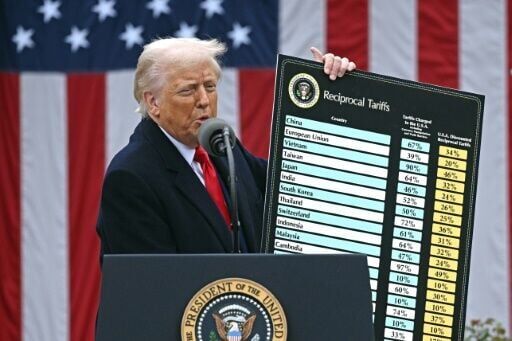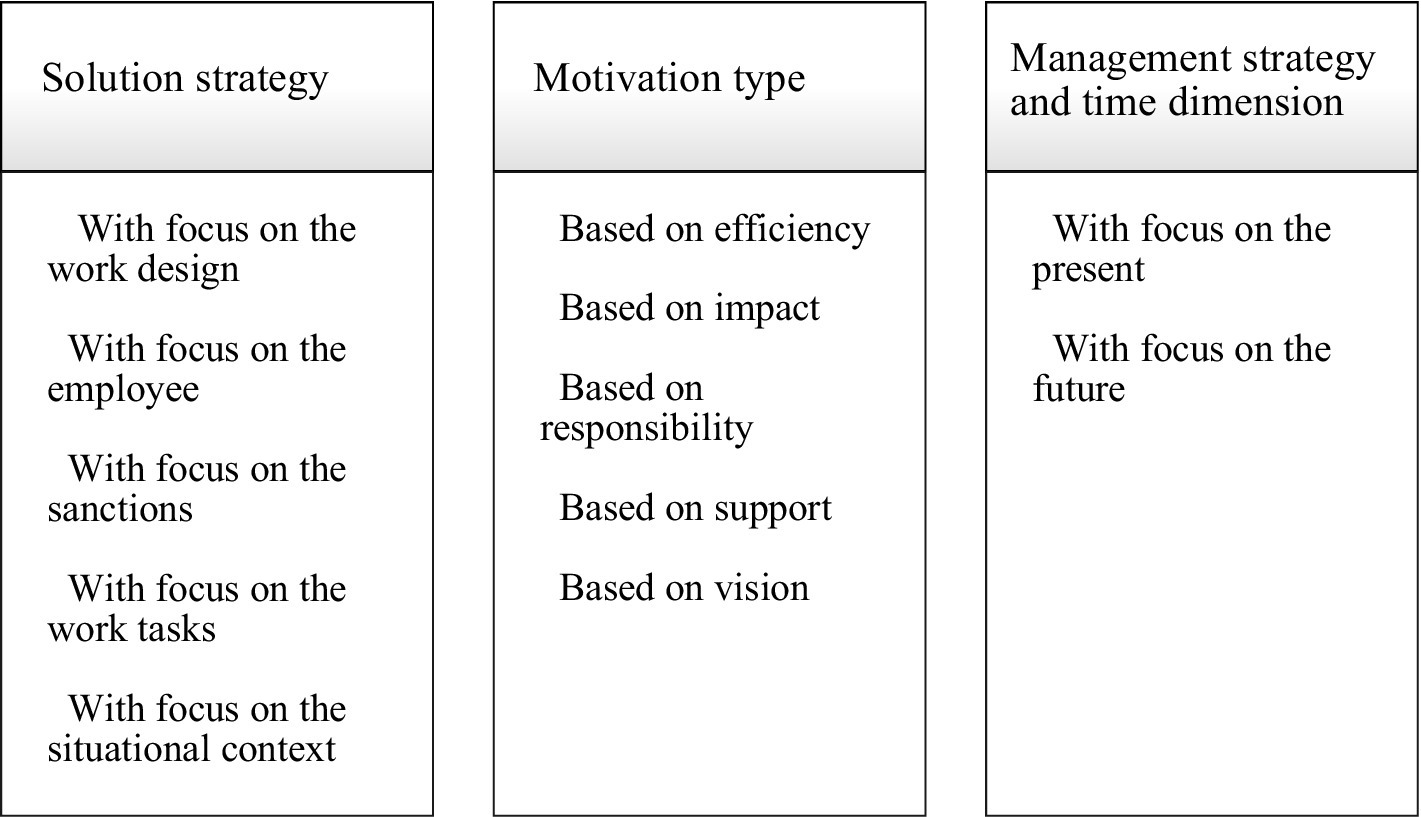Report on the Enactment of a $9 Billion Rescissions Package and its Implications for Sustainable Development Goals
Executive Summary
The executive branch has signed into law a rescissions package totaling approximately $9 billion, redirecting previously approved federal funds. This legislative action carries significant implications for the United States’ commitment to the global Sustainable Development Goals (SDGs), primarily through substantial cuts to foreign aid administered by the U.S. Agency for International Development (USAID). The reduction in funding directly challenges progress on key SDGs, including No Poverty (SDG 1), Zero Hunger (SDG 2), Good Health and Well-being (SDG 3), and particularly Partnerships for the Goals (SDG 17).
Legislative and Financial Details
Overview of the Rescissions Package
The newly enacted law rescinds approximately $9 billion in federal funding. The distribution of these cuts is as follows:
- U.S. Agency for International Development (USAID): A reduction of nearly $8 billion. This impacts an agency historically central to providing development assistance and aid to impoverished nations, directly affecting programs designed to advance numerous SDGs.
- Corporation for Public Broadcasting (CPB): A reduction of over $1 billion, affecting federal funding for domestic entities such as NPR and PBS.
This measure was presented by proponents as a step toward fiscal responsibility and the elimination of wasteful government spending.
Congressional Approval Process
The legislation was approved by both chambers of Congress before receiving presidential assent. The process included:
- Initial approval by the House of Representatives in June.
- A narrow approval in the Senate by a 51–48 margin on July 17.
- Final passage of the reconciled version by the House.
Impact on Sustainable Development Goals (SDGs)
Challenges to Global Partnerships and Development (SDG 17)
The rescission of nearly $8 billion from USAID represents a significant scaling back of the U.S. role in international development. This action directly conflicts with the principles of SDG 17: Partnerships for the Goals, which emphasizes the importance of global cooperation and financial commitments from developed countries to support sustainable development in developing nations. Critics, including the Senate Minority Leader, argue that this reduction in U.S. aid creates a “dangerous vacuum” that may be filled by other global powers, potentially undermining efforts related to SDG 16: Peace, Justice and Strong Institutions.
Setbacks for Core Development Objectives
The funding cuts to USAID are anticipated to have a direct negative impact on a wide range of programs essential for achieving the SDGs. Key areas of concern include:
- SDG 1 (No Poverty) & SDG 2 (Zero Hunger): Foreign aid is a primary mechanism for funding poverty alleviation programs and providing food assistance to vulnerable populations.
- SDG 3 (Good Health and Well-being): Reductions will likely affect public health initiatives, disease prevention, and healthcare system support in recipient countries.
- SDG 4 (Quality Education): Funding for educational programs, a common component of international development assistance, is jeopardized.
- SDG 10 (Reduced Inequalities): The cuts may hinder progress in reducing economic and social inequalities between and within countries.
Domestic Implications and Stated Rationale
Justification for the Policy
Proponents of the rescissions package, including the Senate Majority Leader, framed the legislation as a necessary measure for fiscal prudence. The stated goals were to eradicate “waste, fraud and abuse” within the federal budget. The administration had previously expressed concerns that USAID was not sufficiently advancing U.S. core interests, leading to the agency’s absorption into the State Department and contributing to the rationale for the funding cuts.
Impact on Domestic Information and Education Goals
The reduction of over $1 billion in funding for the Corporation for Public Broadcasting also has implications for domestic SDG-related objectives. This cut could affect:
- SDG 4 (Quality Education): Public broadcasting, particularly PBS, is a significant source of accessible educational content for all ages.
- SDG 16 (Peace, Justice and Strong Institutions): Access to reliable, independent information through outlets like NPR is considered vital for an informed citizenry, which is a cornerstone of strong and accountable institutions.
Analysis of Sustainable Development Goals (SDGs) in the Article
1. Which SDGs are addressed or connected to the issues highlighted in the article?
The article discusses issues that are directly and indirectly connected to several Sustainable Development Goals. The primary focus on cutting foreign aid has significant implications for global development efforts.
-
SDG 1: No Poverty
The article explicitly states that the U.S. Agency for International Development (USAID) “provided impoverished countries aid and offered development assistance.” Cutting nearly $8 billion from this agency directly impacts programs aimed at poverty reduction in these countries, making SDG 1 highly relevant.
-
SDG 16: Peace, Justice and Strong Institutions
This goal is relevant in two ways. First, the article details the legislative process within the U.S. government, including votes in the House and Senate (“Senate narrowly approved the measure by a 51–48 margin”), highlighting the functioning of national institutions (Target 16.6). Second, it touches upon international peace and security, with Democrats arguing that the cuts “create a dangerous vacuum that the Chinese Communist Party will continue to eagerly fill” and put “national security at risk.”
-
SDG 17: Partnerships for the Goals
This is the most directly impacted SDG. The article’s central theme is the reduction of “foreign aid” and funding for international development cooperation through USAID. This action represents a change in the financial commitment of a developed country (the U.S.) to global partnerships for sustainable development.
2. What specific targets under those SDGs can be identified based on the article’s content?
Based on the article’s content, several specific targets under the identified SDGs can be pinpointed:
-
Target 1.a: Ensure significant mobilization of resources from a variety of sources, including through enhanced development cooperation, in order to provide adequate and predictable means for developing countries… to implement programmes and policies to end poverty.
The article discusses the opposite of this target. The “rescissions package pulls back nearly $8 billion in funding Congress already approved for the U.S. Agency for International Development (USAID).” This action reduces, rather than enhances, the mobilization of resources for developing countries to fight poverty.
-
Target 16.6: Develop effective, accountable and transparent institutions at all levels.
The article describes the entire legislative mechanism used to pass the rescissions package, from its approval in both chambers of Congress to the presidential signature. The debate itself, with Senator Thune calling it a step toward “fiscal sanity” and Senator Schumer calling it a way to “poison the bipartisan appropriations process,” reflects on the perceived effectiveness and accountability of the governing institutions.
-
Target 17.2: Developed countries to implement fully their official development assistance commitments…
The core issue of the article is the U.S. government’s decision to cut back on its foreign aid, which is a form of Official Development Assistance (ODA). The signing of the “$9 billion rescissions package to scale back already approved federal funds for foreign aid” is a direct move away from fulfilling development assistance commitments.
3. Are there any indicators mentioned or implied in the article that can be used to measure progress towards the identified targets?
Yes, the article provides specific quantitative data that can be used as indicators to measure the impact on the identified targets.
-
Indicator for Target 17.2 (and by extension, 1.a): The official indicator is 17.2.1, “Net official development assistance… as a proportion of the… gross national income (GNI).” The article provides the raw financial data that would be part of this calculation.
- The article quantifies the reduction in ODA: “nearly $8 billion in funding” is cut from USAID.
- It specifies the total amount of the rescission: a “roughly $9 billion rescissions package.”
This specific monetary value is a direct indicator of a decrease in the financial resources allocated for international development cooperation, allowing for a clear measurement of the financial impact.
- Indicator for Target 16.6: The official indicator is 16.6.1, “Primary government expenditures as a proportion of original approved budget.” The article’s focus on a “rescissions package to scale back already approved federal funds” is a direct example of this indicator in action. The government is officially altering its previously approved budget, and the article quantifies this change as a “$9 billion cut.”
SDGs, Targets, and Indicators Analysis
| SDGs | Targets | Indicators |
|---|---|---|
| SDG 1: No Poverty | Target 1.a: Ensure significant mobilization of resources… through enhanced development cooperation… to provide adequate and predictable means for developing countries… to end poverty. | The reduction of development assistance funding by “nearly $8 billion” for USAID, an agency that provides aid to “impoverished countries.” |
| SDG 16: Peace, Justice and Strong Institutions | Target 16.6: Develop effective, accountable and transparent institutions at all levels. | The use of a “rescissions package” to alter an “already approved” budget, as passed by Congress (House and Senate votes) and signed by the President. The specific value of the cut is “$9 billion.” |
| SDG 17: Partnerships for the Goals | Target 17.2: Developed countries to implement fully their official development assistance commitments. | The specific monetary value of the cut in foreign aid: a “$9 billion rescissions package,” which includes pulling back “nearly $8 billion in funding” for USAID. This is a direct measure of a reduction in Official Development Assistance (ODA). |
Source: foxnews.com







